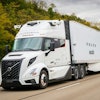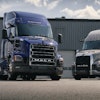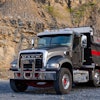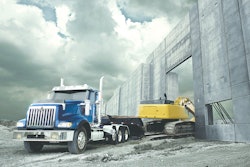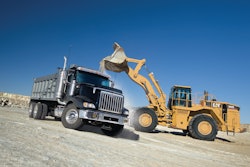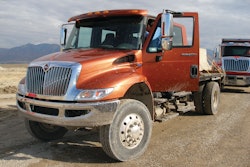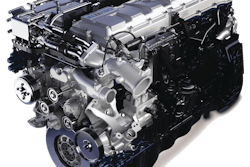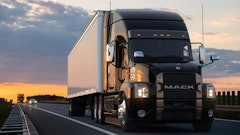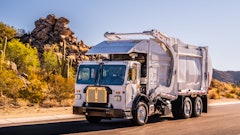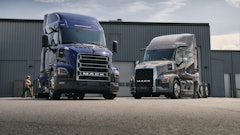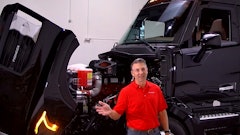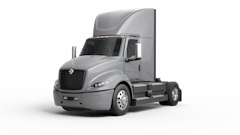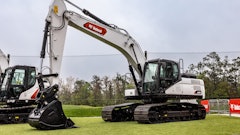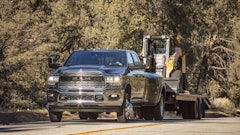Navistar International Corp. is dumping the exhaust-gas recirculation (Advanced EGR) technology it had championed up to now as an alternative to selective catalytic reduction (SCR) diesel aftertreatment. For heavy-duty engines, all of its major competitors committed to SCR.
Navistar's new solution? SCR.
Navistar claims it will produce in early 2013 a 13-liter diesel truck engine using what the company calls In-Cylinder Technology Plus (ICT+), a combination of its "advanced in-cylinder engine expertise with urea-based aftertreatment." Urea solution is the catalyst injected into the exhaust stream of diesel engines that use SCR to break down smog-causing oxides of nitrogen into inert nitrogen, water and carbon dioxide.
Recent financial results and a lawsuit that did not go in Navistar's favor have dramatically raised the stakes in this emissions-technology reversal.
Advanced EGR had the advantage that it did not require drivers to maintain a reservoir of urea, or diesel exhaust fluid (DEF). Unfortunately, Navistar was never able to certify an Advanced EGR engine that actually operated at or below the oxides-of-nitrogen limit of 0.20 grams per brake-horsepower hour that the Environmental Protection Agency imposed on road-going trucks in 2010.
In order to sell heavy-duty engines that did not meet the 2010 emissions limit, the company employed emissions credits its medium-duty trucks had earned by beating the deadline for satisfying medium-duty emissions regulations.
Navistar hasn't revealed how many emissions credits it banked, but the end of the reserve must be in sight. The company and EPA worked out an interim rule last year that would have allowed Navistar to pay a non-compliance penalty (NCP) for each engine it sold that did not meet the .20 g/bhp-hr NOx limit.
Volvo and Mack Trucks took exception to this interim rule, sued the EPA on the grounds that it violated rulemaking procedures, and won the case in federal court in mid-June. Navistar vowed to appeal. In fact the company's July 6 announcement includes NCPs as part of a strategy to continue marketing trucks that do not meet the 0.2 g/bhp-hr NOx requirement until it can certify a family of truck diesels with SCR aftertreatment.
"The company intends to continue to build and ship current model EPA-compliant trucks in all vehicle classes using appropriate combinations of earned emissions credits and/or non-compliance penalties (NCPs) during the transition to ICT+," according to the statement.
Navistar's switch to SCR might yet preserve the company. A $172 million second-quarter 2012 loss – following a $153 million first-quarter loss – dropped Navistar shares in early June to a three-year low of $20.21. Investors Carl Icahn and Dr. Mark H. Rachesky both bought more stock; like hostile-takeover sharks closing in on a bleeding swimmer.
"Certainly, our first half performance was unacceptable," Daniel C. Ustian, Navistar chairman, president and chief executive officer said when announcing the second-quarter loss. "It included a warranty reserve to repair early 2010 and 2011 vehicles."
Navistar made what it called "adjustments to pre-existing warranties" in the first quarter that added $123 million to its usual accruals of $111 million. "Such adjustments typically occur when claims experience deviates from historic and expected trends," according to the company's quarterly financial statement.
In the second quarter, ordinary warranty accruals rose to $125 million and another adjustment added $104 million. So the company set aside an extra $227 million (nearly equal the expected $236 million) in the first half of 2012 to cover unexpected warranty costs arising from vehicles sold with Advanced EGR engines.
Navistar's path between now and the expected 2013 availability of an EPA-2010-compliant 13-liter engine should be interesting. The second half of the year is normally when the company's business is strongest. If its stock price stabilizes, the company could avoid an expensive defense against hostile takeover.
But if stronger business means using up emissions credits faster, then the depth of that emissions-credit reserve could become crucial. Should emissions credits run out before the ICT+ SCR engine is certified, only successful appeal of the struck-down EPA interim ruling would allow Navistar to keep selling its own engines.
"We will continue to work with the agencies to ensure that our customers receive uninterrupted deliveries in all 50 states during this transition," said Ustian.
The company is applying characteristic spin to its newly acknowledged technology.
"We have made tremendous progress with in-cylinder technology and with the introduction of ICT+ our goal is to offer the world's cleanest and most fuel efficient diesel engine—benefiting both our customers and the environment for years to come," said Ustian.
The company states that combining its in-cylinder technologies with SCR will "meet 2010 U.S. Environmental Protection Agency (EPA) emissions regulations and position the company to meet greenhouse gas (GHG) rules in advance of 2014 and 2017 requirements."
